No matter where you look, you’re probably being bombarded with advertisements of all kinds, promising that this or that brand-new product finally has the answers and can change your life. While there have certainly been some incredible advances in wellness products, the whiplash and pressure of trying every new tip, trick, and product can be exhausting.
When wellness gurus have you feeling worn out, look to ancient traditions that have been used for generations as a way to support health and wellness, including the Ayurvedic traditions of garshana and abhyanga.
Ayurveda is an Indian wellness practice that focuses on the health of body and mind. Garshana is the process of rubbing a dry brush over your skin, and abhyanga involves massaging your entire body with warm oil.
Benefits of garshana and abhyanga
Garshana and abhyanga can help you support the wellness of body and mind in many ways, including:
- Waking the body
- Relaxing the muscles
- Increasing blood flow
- Exfoliating dead skin cells
- Improving skin texture
- Helping calm the mind
- Stimulating the lymphatic system
- Soothing and moisturizing skin
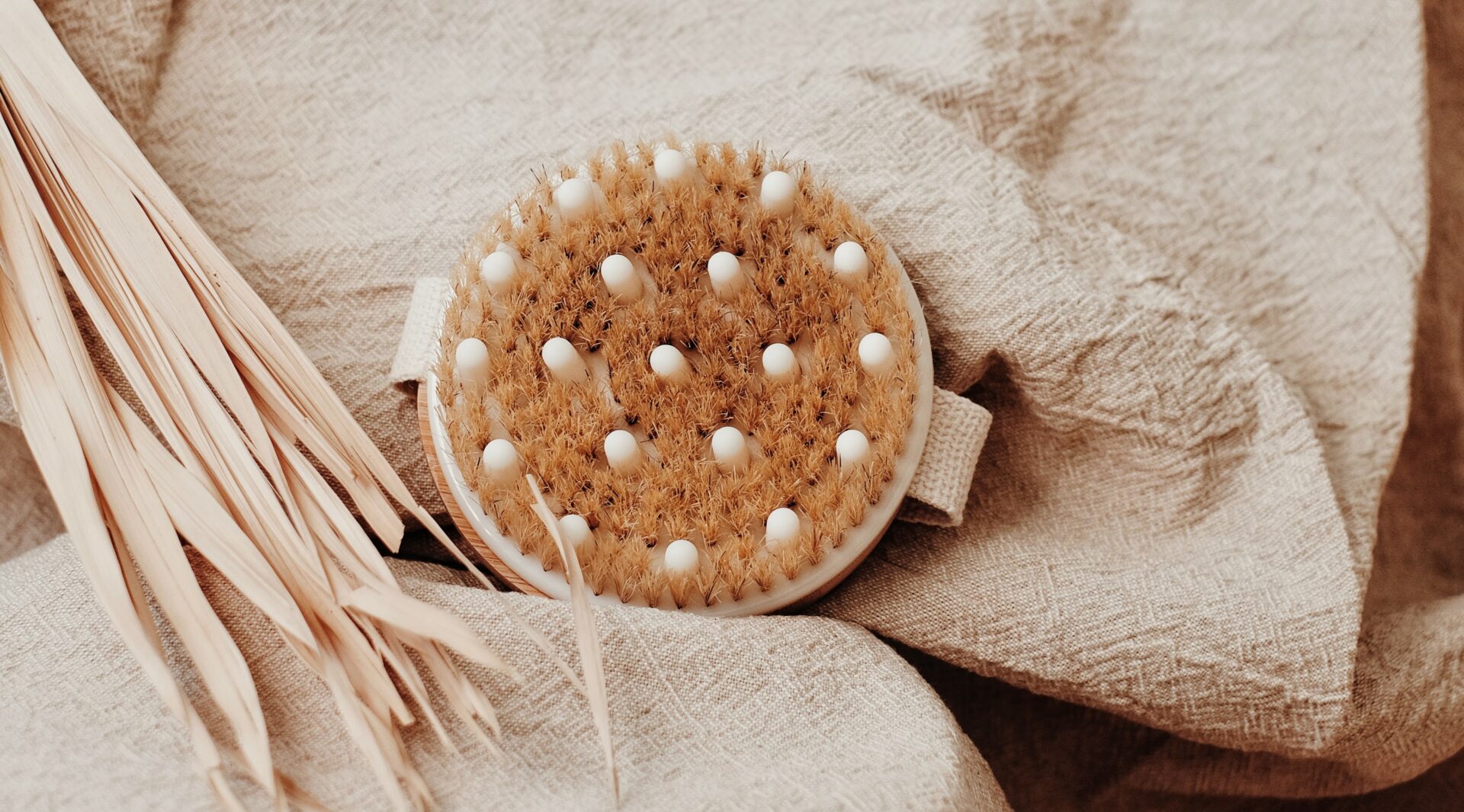
Where can I buy a dry brush?
Before you begin your garshana routine, you will need to purchase a dry brush. Dry brushes are sold in many different stores and can be found online or in person. If you would like to add one to your collection of self-care items, be sure to buy a brush that is made with natural materials. You do not want one made with synthetic or plastic bristles, as these brushes can be too coarse on the skin. We recommend a softer, natural-bristle brush.
Dry brushes come in many shapes and sizes but are generally used in the same way. No matter the shape or type of brush, the overall technique remains the same.
YL tip: Looking for a gentler way to practice garshana? Try using 100 percent silk gloves instead of a brush.
How to dry brush
The process of dry brushing is quick and easy. Start with clean skin, free of any lotions or oils. Begin brushing your feet and work your way up your body to your neck using firm, steady pressure to stimulate the skin. Always move in straight lines over your long bones, like your legs and arms. Move in circular motions when going around your joints (ankles, knees, hips, wrists, elbows, and shoulders). Massage in circular motions over your glutes and stomach. Do 5─7 strokes in each area. The process should take around 5 minutes. If you see that your skin is getting red and irritated, move on to the next area and try lightening the pressure a little. Never brush over areas affected by sunburn, rash, wounds, or varicose veins.
Do not use the dry brush over your heart and breasts, under the arms, or in the groin area. The skin in these places is too sensitive for this routine. Also avoid dry brushing your face with a body dry brush: There are specific brushes created for use on the face. Be mindful and lighten pressure when going over other areas where your skin may be sensitive, like the inner arm or neck.
There are many varieties on how garshana can be done, so find your personal rhythm and what you are comfortable with. Just be sure to follow the general rule of thumb: straight motion over long bones and circular over joints.
YL tip: It is best to do your dry brushing routine in the morning. Find a place where you are comfortable to be without clothes. Practice garshana in the shower (with the water off) or over a towel so you don’t get dry skin all over your floor.
How often should you practice garshana?
The frequency of dry brushing depends on your skin sensitivity, dryness levels, and whether you have any skin conditions. If you do not have any major skin issues and tend to have naturally moisturized skin, start your mornings with dry brushing 4─7 days a week. If your skin is slightly sensitive and is on the dryer side, start by dry brushing a few times a month and work your way up to 1─3 times a week if your body reacts well. As you continue the practice, you should find a frequency that feels right for you and that supports your wellness.
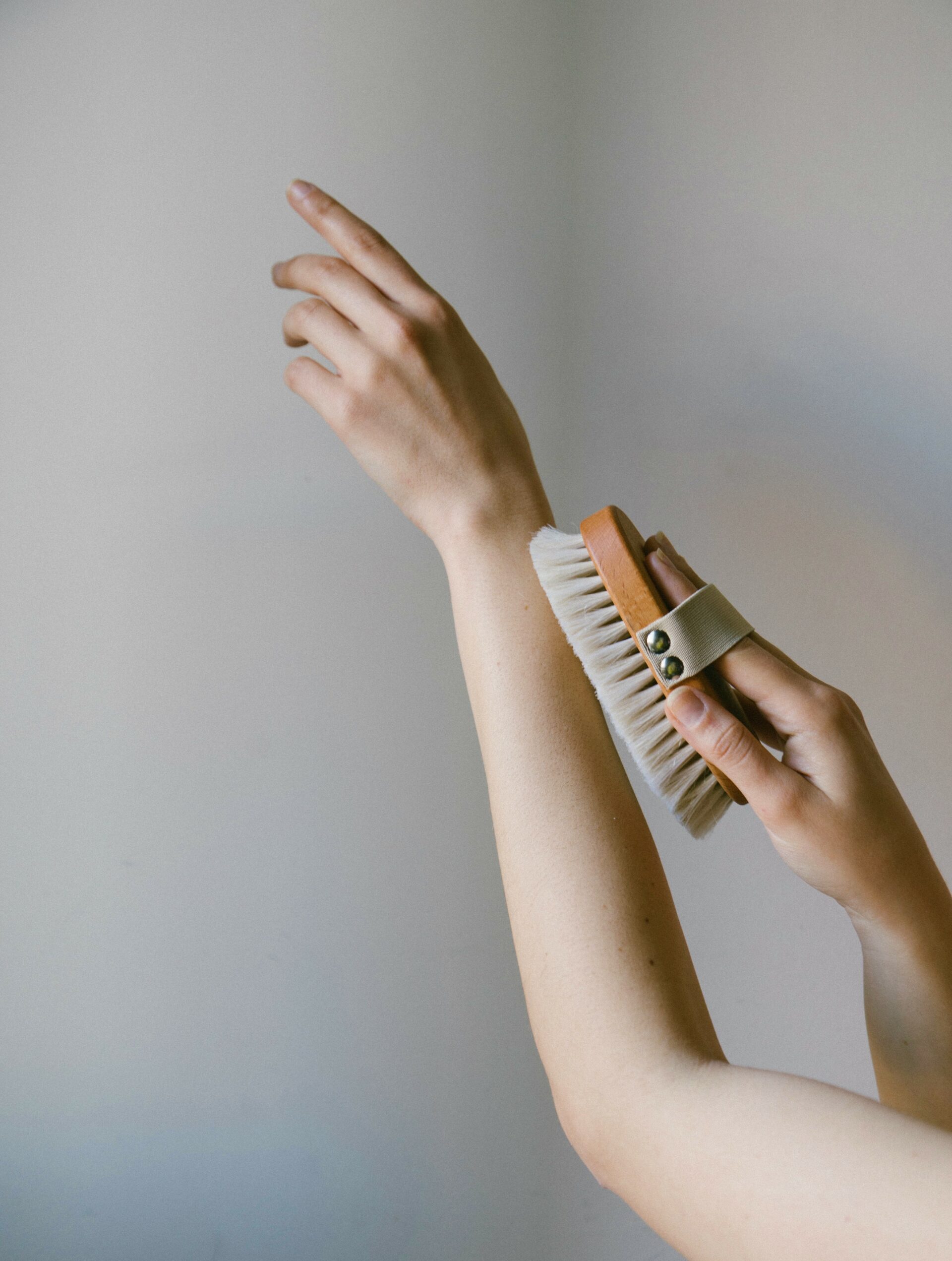
If you suffer with poor lymph health or other skin conditions, speak with your doctor about dry brushing before performing it. This practice may not be meant for you.
How to clean your dry brush
It is important to wash your dry brush often using a mild, gentle shampoo, like our Seedlings® Baby Wash & Shampoo, to get rid of dead skin buildup. Simply wet the brush, apply the soap, and massage the bristles. Rinse all the soap out with water. To prevent damage when drying the brush, place it on a cloth with the bristles facing down, so the water does not collect inside the frame. The frequency of the deep cleaning depends on how often you practice garshana. If you dry brush daily, be sure to wash your brush once a week. If you do this practice less frequently, wash a couple times a month.
In between your washes, make a solution of water, rubbing alcohol, and Tea Tree essential oil. Spritz the brush with this solution after every 1─2 uses for a quick refresh.
Once you’ve brushed up on your garshana, follow it up with the comforting massage practice of abhyanga.
What is abhyanga?
Abhyanga is a full-body oil massage that soothes and stimulates the skin from head to toe while helping you achieve a state of relaxation. The warmth of the oil helps it penetrate and deeply moisturize the skin, while the massage leaves you feeling relaxed, physically grounded, and in touch with your body.
Massage oil blends
The practice of abhyanga massage can be done with any of our massage oil blends, including:
Any of these premade massage oils are great for abhyanga, but you can also create your own personalized blends using V-6™ Vegetable Oil Complex and your favorite essential oils to give your massage a personal touch. We recommend trying a blend of Rosemary and Eucalyptus Globulus for a refreshing experience.
YL tip: Be sure to test the essential oil blends on a small area before applying to your entire body.
How to perform abhyanga
This practice is simple and can be done after your morning garshana routine. Follow these easy steps for ultimate relaxation:
1. Warm your massage oil.
Take either one of our premade Young Living massage blends or your own custom blend and place it in a glass dropper container. Warm it up by running the container under hot water or by placing it into a cup of hot water for 5 minutes. Just make sure your oil container is sealed tightly to prevent water from seeping in.
2. Protect your floors.
Place a towel or mat on the floor in case some of the oil drips.
3. Start massaging.
Remove your clothes and place a dropperful of oil into the palm of your hand and rub your hands together. You want the oil to be soothing and warm, not too hot. Begin applying the oil to your scalp. Take the time to really massage in the oil and breathe in the aromatherapy.
Work your way from your head down to your toes, massaging each area of your body gently. Apply more oil as needed. Don’t neglect even the small places like your ears, fingers, and toes. Follow the same pattern of massage as done with dry brushing: Massage in circular movements over your joints and rub in straight lines over your long bones. Massage your stomach in a circular, clockwise motion.
4. Check in with yourself.
As you massage, send loving thoughts and appreciation to your body. Give extra love to the areas that you view as trouble spots or are unhappy with for whatever reason.
5. Let the oil absorb.
If you have time, allow the oil to soak into your skin for 10─20 minutes before you shower.
6. Take a shower.
Before getting into the shower, wipe your feet to avoid slipping. Shampoo and condition with your favorite Young Living hair products. If you haven’t started using natural shampoo and conditioner yet, learn more about what to expect when you make the switch here. Apply body wash only to the areas where you most need it. Allowing the oil to soak into the other parts of your skin will create a moisture barrier and promote a healthy glow.
7. Dry off.
Gently pat your body dry and enjoy your incredibly smooth, moisturized skin.
While it is safe to practice abhyanga daily, you will get the same skin benefits if you do it 2─3 times a week.
YL tip: If you do not want to wash your hair on a specific day but would still like to perform abhyanga, don’t massage your scalp with the oil. Simply massage with clean fingertips to avoid making your hair greasy.
We’re thrilled for you to spend this time with garshana and abhyanga so you can get to know your body again and spend time feeling grounded and relaxed. While many of us feel disconnected from ourselves and our senses, it’s hard to know exactly what to do about it. With these Ayurvedic practices, you’re taking the first step on a road to rediscovering your relationship with yourself. We’re excited for what you’ll learn.
Looking for more self-care tips? Try a soothing massage with these spa-worthy essential oils and DIY cocoa-mint massage bars or check out 18 best essential oils for massage—plus tips and tricks for at-home spa vibes.

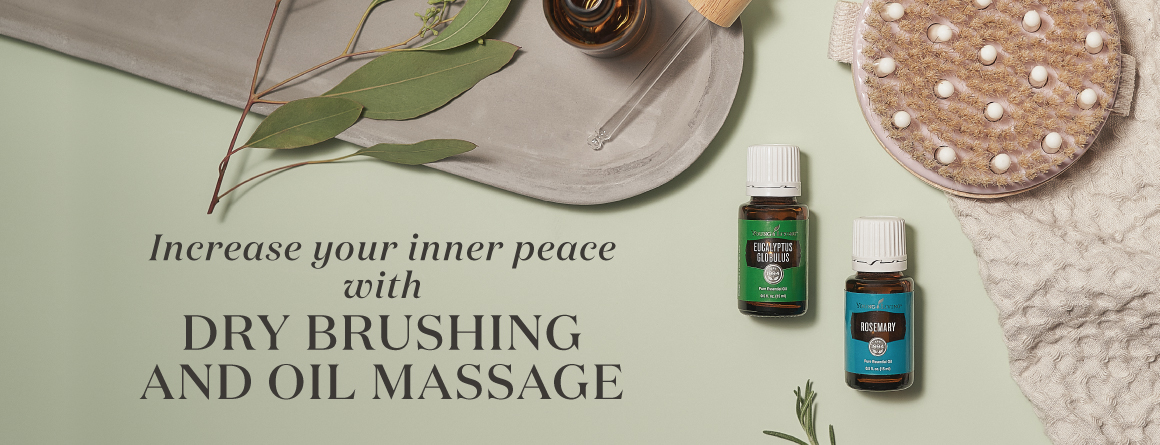
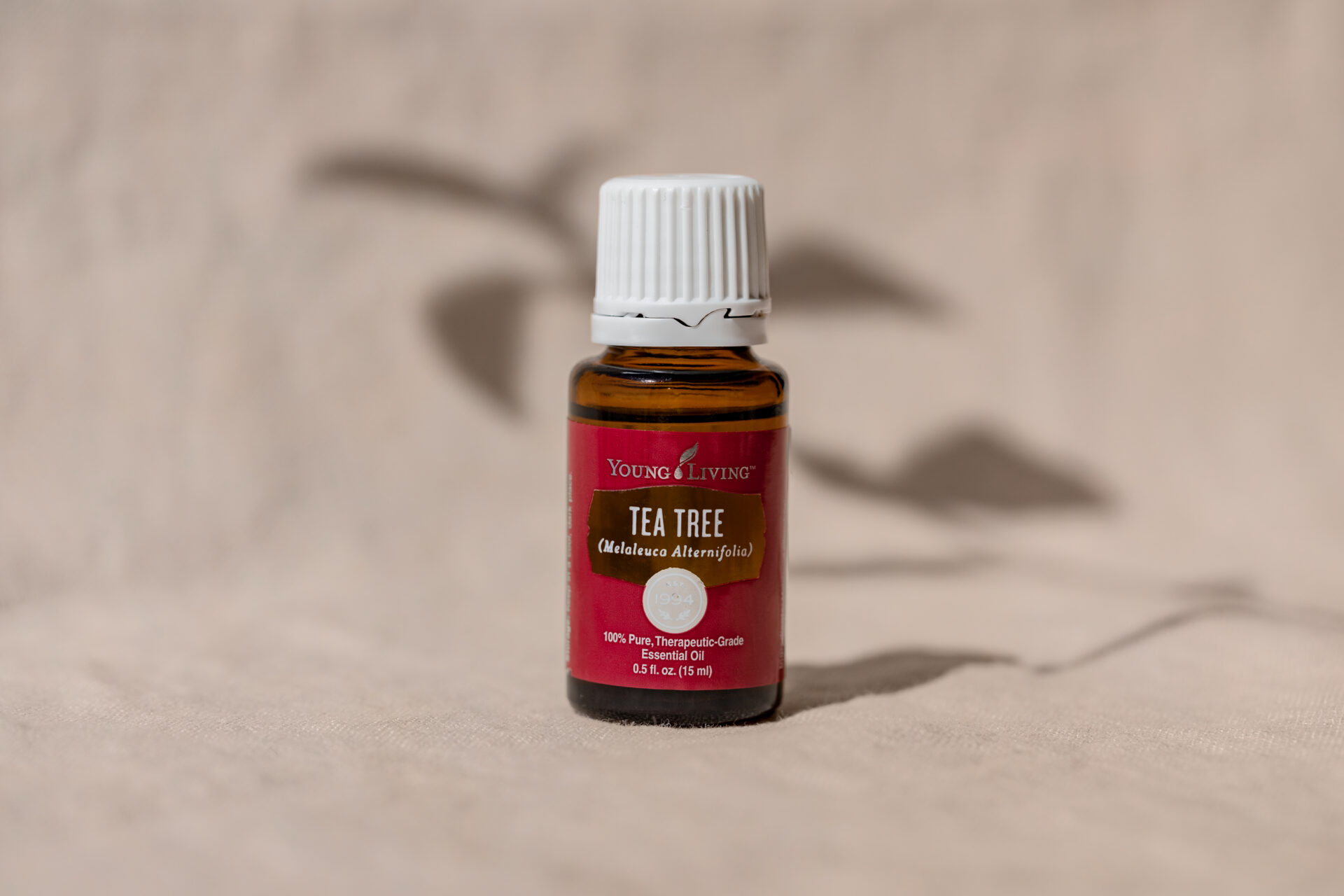
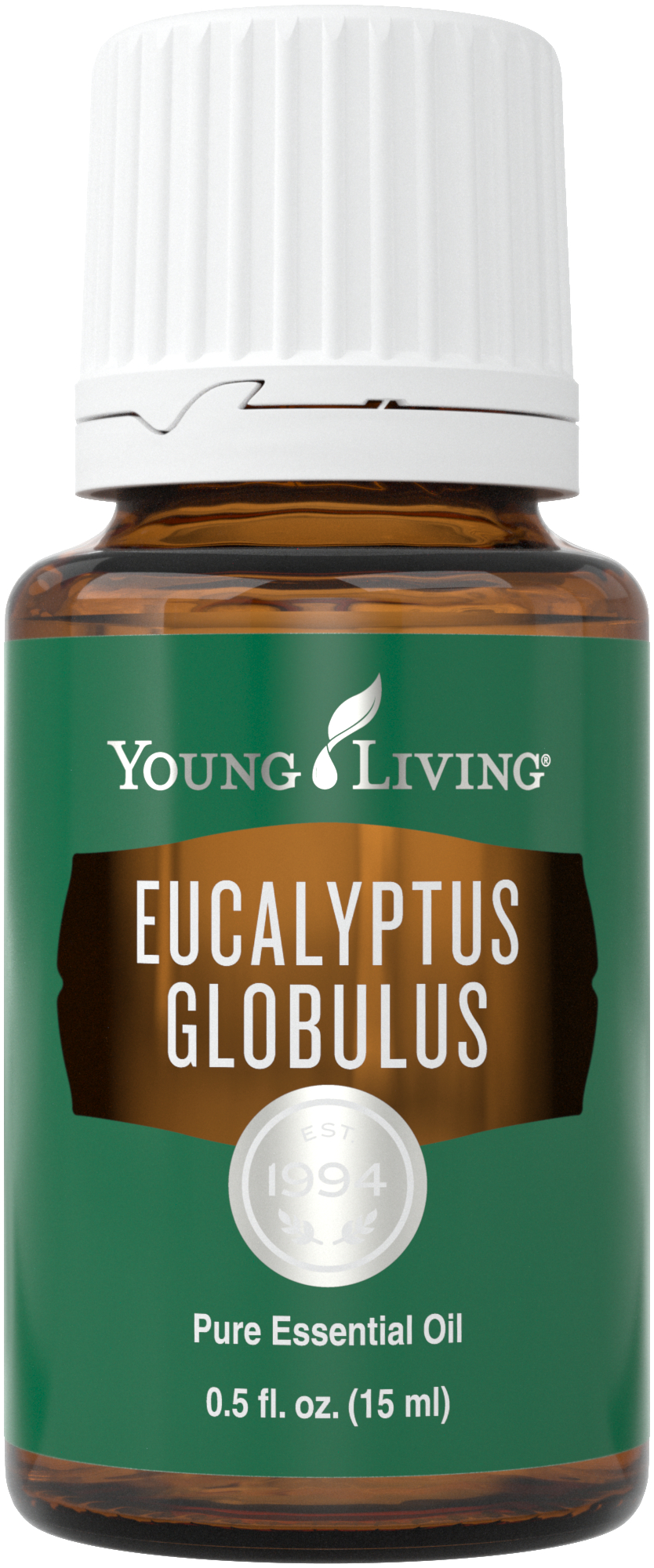
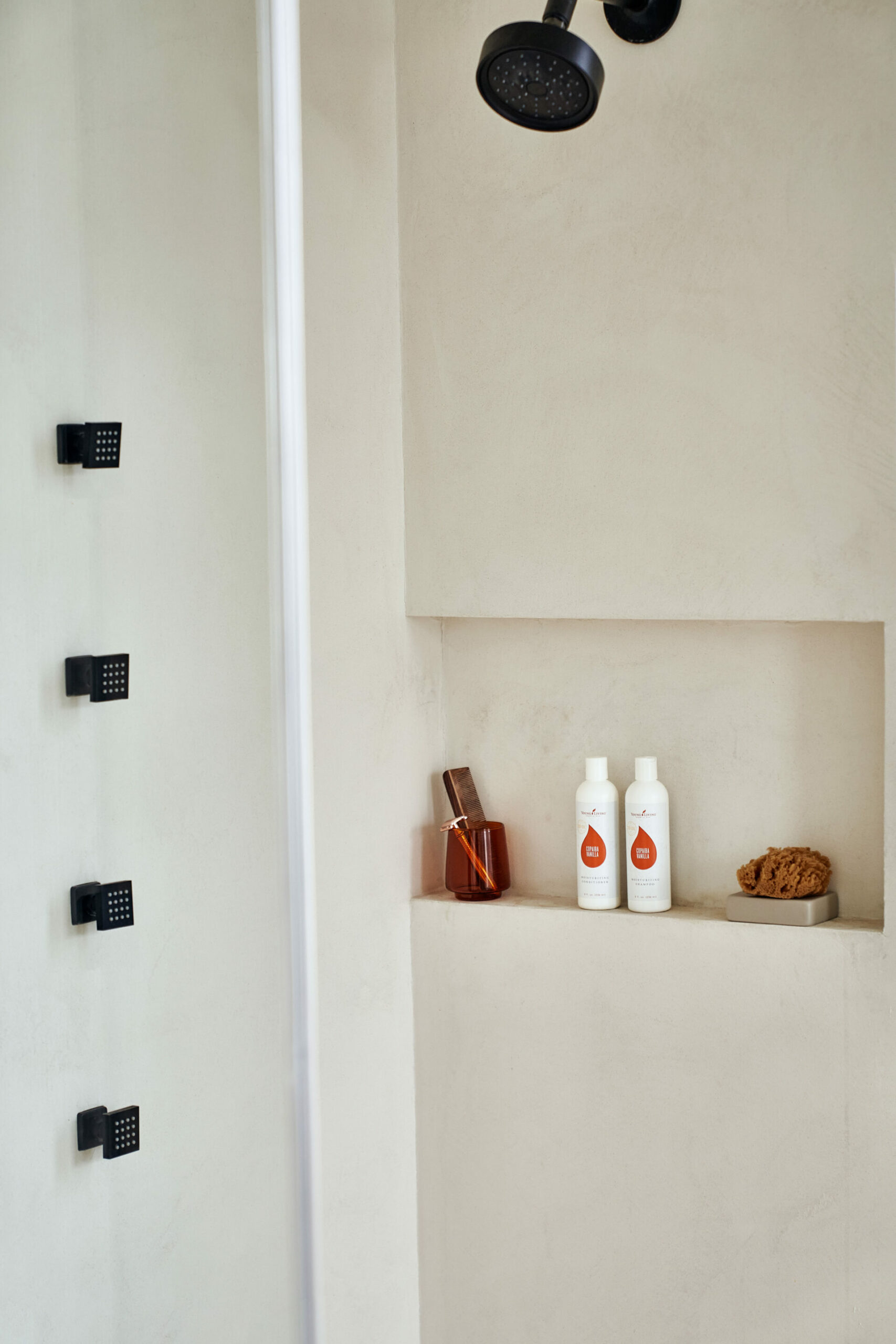


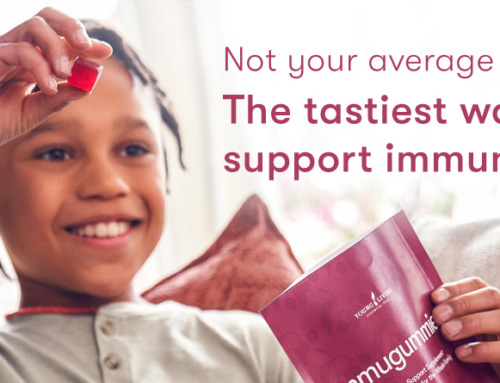
Leave A Comment